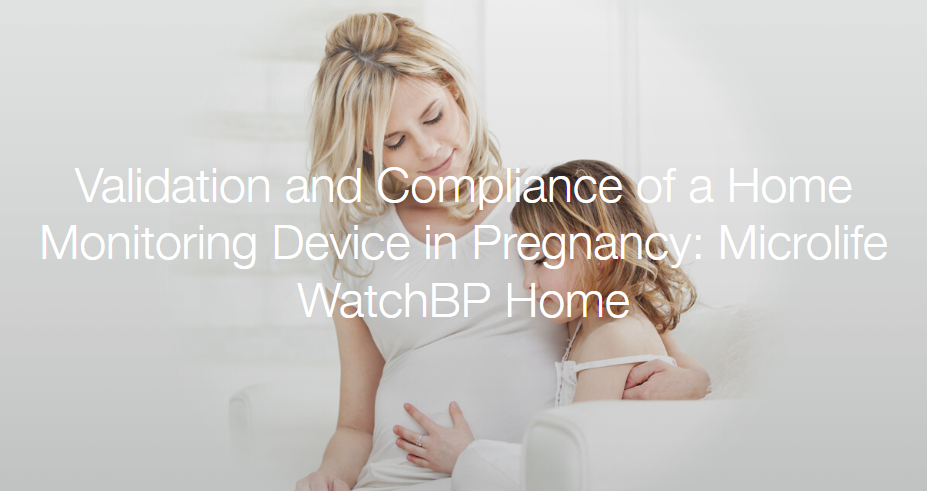
The Importance of Monitoring
- Regularly monitoring blood pressure is critical during pregnancy, particularly when identifying hypertension-related conditions such as gestational hypertension and pre-eclampsia. There is an increased risk of complications for both the mother and fetus if high blood pressure goes unnoticed and unmanaged. This is where the Microlife WatchBP takes the extra step as the only validated blood pressure monitor on the market specifically designed with pregnant women in mind.
- According to MacGilivray, (1988), a diastolic blood pressure of ≥90 mmHg on two separate occasions more than 4 hours apart or a single reading of >110 mmHg accompanied by proteinuria of >0.3 g on a 24-hour collection is defined as pre-eclampsia. Separately, for hypertension, a blood pressure of ≥90 mmHg on two occasions at least four hours apart or a single diastolic reading of >110 mmHg and proteinuria was defined as >0.3 g on a 24-hour collection.
- Pre-eclampsia can be accompanied by reduced blood flow through the placenta so that the baby receives less oxygen and nutrients. This can cause low birth weight and other problems for the baby. Most women with pre-eclampsia still deliver healthy babies. A few develop a condition called eclampsia, which causes high risk for both mother and baby. Pre-eclampsia can be recognized by a clear increase in blood pressure after 20 or 32 weeks of gestation. Hence, it is essential that blood pressure is monitored frequently and accurately during pregnancy.
Validation
- A study conducted by Chung et al. (2009) evaluated the accuracy and reliability of the Microlife WatchBP Home monitor and verified that the device is able to provide reliable readings when compared to standard clinical measurements. Additionally, research by Shennan et al. (2010) further highlighted the importance of accurately measuring blood pressure during pregnancy and validated the effectiveness of home monitoring devices. The validation of the Microlife WatchBP Home monitor ensures that expecting mothers can take a proactive approach to managing their health while confidently being able track their blood pressure levels.
Empowering Mothers
- Healthcare devices should be designed to allow individuals to easily take charge of their health- and the WatchBP does just that. One of the key features of the WatchBP is its user-friendly design, making it accessible, and easy to use, but also empowers mothers to take control of their health during pregnancy. Emphasizing collaboration between mothers and healthcare professionals promotes improvements in maternal and fetus health outcomes.
Conclusion
- The WatchBP Home device is the leading blood pressure monitor in maternal health dedicated to providing reliable readings and empowering mothers to take charge of their health.
- Most electronic blood pressure monitors have significant difficulties in measuring during pregnancy and especially during pre-eclampsia. This means that, when measurements are taken with these devices, pre-eclampsia may NOT be detected. For this reason, healthcare authorities require a specific validation test for automated blood pressure monitors that are used in pregnant women and those who have pre-eclampsia before automated blood pressure devices may be recommended for use during pregnancy.
Click here to view all of Micolife Products on MSW website
Click here to download the abstract in pdf format
References
- Chung, Y., de Greeff, A., & Shennan, A. (2009, March 25). Validation of the microlife WATCHBP home device for self home blood pressure measurement according to the International Protocol. Blood pressure monitoring. https://pubmed.ncbi.nlm.nih.gov/17496469/
- Davey DA, MacGillivray I. The classification and definition of the hypertensive disorders of pregnancy. Am J Obstet Gynecol 1988 April; 158(4):892–898.
- Shennan, A., et al. (2010). The role of home monitoring in pregnancy: is it effective? Hypertension in Pregnancy, 29(3), 267-275. doi:10.3109/10641955.2010.484086.
